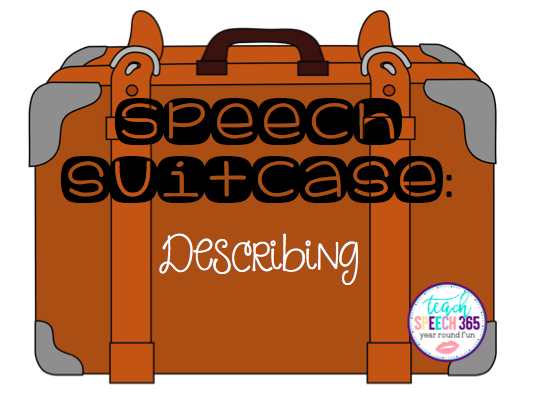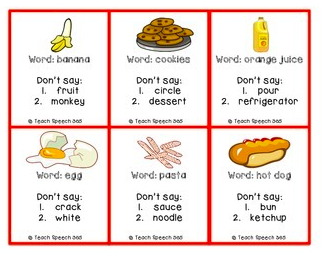Speech Suitcase: Describing
It’s time for another Speech Suitcase post! This time, I’m tackling describing.

1. My number one item to work on describing is the Expanding Expression Tool by Sara Smith. Read my blog posts here and here for more details.
2. Don’t Say It Describing Dash: This is similar to Taboo, but you can increase and decrease the level of difficulty. The cards are separated out into categories, so you can choose to only use one category or mix them up. There are two words/phrases that the student needs to avoid saying. Use one or both depending on how hard you want it to be.

3. Ten For packets: I usually have a describing page in these, plus they’re free!
4. I also really like using items that we come across while reading books. I often will have students describe items from books, either after we’re done reading it or during.
5. Apps: Sometimes I’ll use the items in articulation apps if I have mixed groups. While others are practicing their sounds, the language students will be describing them.
How do you work on describing?


I teach EFL and do these kind of exercises often. Here’s a describing activity I use often:
I give Ss a wacky picture on a device (usually my laptop) and they describe the picture in great detail to their classmates. The classmates ask questions for clarification in order to “see” the picture well enough to draw it from the description. Then I choose one student to make a quick, 1-minute sketch of the picture on the board. After we compare and give feedback. “You did a good job describing ______. You could have talked more about _________.”
For advanced students, I use funny .gifs where they describe what is happening (or past tense practice of what they saw happening) in the funny .gif and then I just reveal it and we give feedback again.
Those are great ideas! Thanks for sharing!